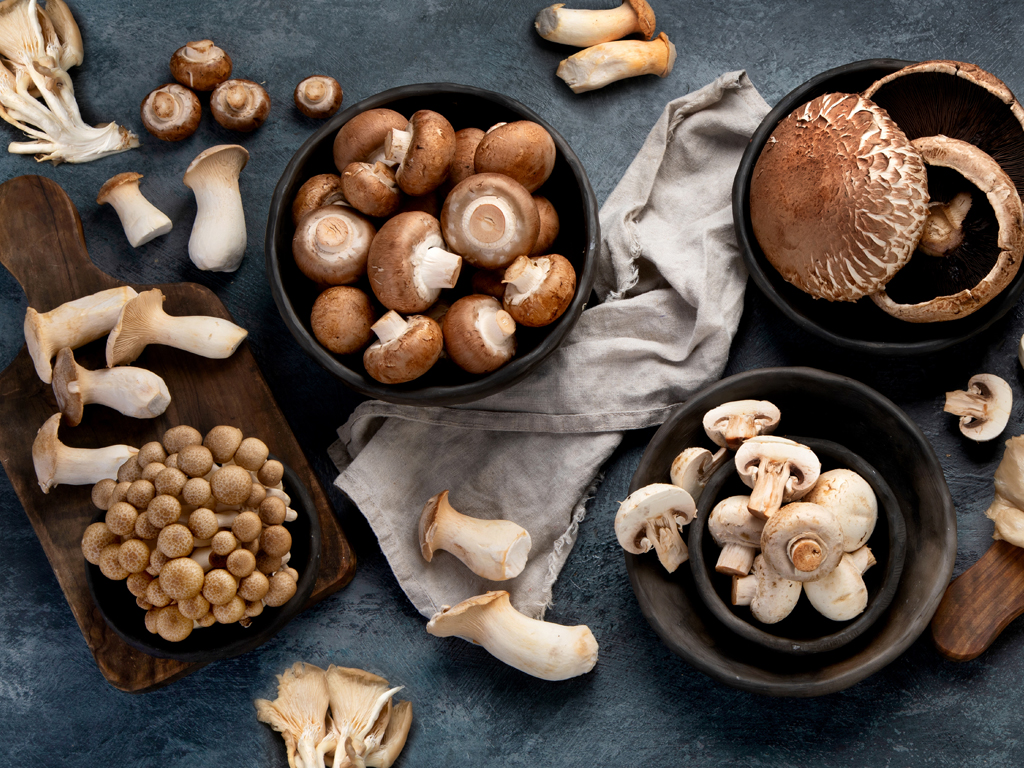
Produce 101: Mushrooms
Mushrooms are one of the most versatile ingredients you can have in your kitchen larder at any time.
Produce 101: Mushrooms, What Makes Mushrooms Different?
Mushrooms give your dish that umami characteristic everybody’s looking for. You may ask what is umami? Well, it’s the fifth flavor. It’s a meaty flavor, a rich savory quality–but without the meat, and in plant-based cuisine, that’s a good thing to have.

Produce 101: Mushrooms and Grades
The USDA has two grades for mushrooms: #1 and #2 based on a number of factors: size consistency, color consistency by variety, and tightness of the veil cap.
USDA GRADES:
- U.S. No. 1 consists of fresh mushrooms of similar varietal characteristics which are mature, at least fairly well shaped, well trimmed, free from open veils, disease, spots, insect injury, and decay, and from damage by any cause.
-
Size. Size is specified in terms of diameter and unless otherwise specified meets the requirements of one of the following size classifications:1. Small to medium — up to 1-5/8 inches in diameter;2. Large — over 1-5/8 inches in diameter.
-
- U.S. No. 2. The requirements for this grade are the same as for U.S. No. 1 except for a greater tolerance for open veils and a larger tolerance for defects.
-
Size. Size is specified in terms of diameter and unless otherwise specified meets the requirements of one of the following size classifications:1. Small to medium — up to 1-5/8 inches in diameter;2. Large — over 1-5/8 inches in diameter.
-
Produce 101: Mushrooms: How to Tell the Age of a Mushroom
If you’ve never heard of the veil cap, when you turn over a mushroom and you can see the gills, that means the veil cap is pulled away.
A younger mushroom will have a completely closed veil hiding the gills. Older, more mature mushrooms will have the veil cap pulled away and exposing the gills. While it doesn’t affect the quality, it just means the mushroom was picked a little older and was getting ready to go to spore. What I mean by going to spore is mushrooms are unique, they neither propagate by a seed or a flower, they actually spore, and that’s what the gills are for.
You may want to cook an open veiled mushroom a little longer, but certainly the flavor is going to be a lot of the same. As a matter of fact, some people seek older mushrooms as they have a more developed flavor.
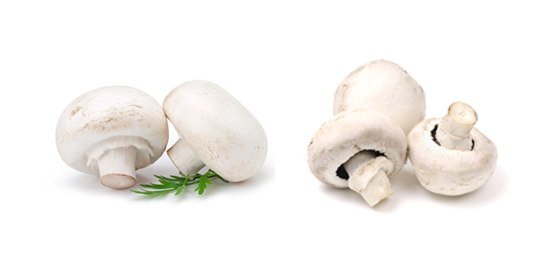
Produce 101: Mushrooms Storage and Handling
When you store your mushrooms, keep them dry, don’t wash them until you’re ready to use them because they do come in dirty. Your Portabella may come in with what looks like a dirt-ball on the stem, don’t worry about it, they grow in a sterilized growing medium.
You just want to take it off right before service, you can take the stem off, you can take a brush and wash it off, use a damp cloth–however you choose to do it is fine, but you will need to wash your mushrooms just before use.

Produce 101: Mushroom Varieties and How to Use Them
Portabellas are often used as a center-of-the-plate meat substitute. Marinated and grilled, you can use it as a burger, you could even use it to replicate a steak on the plate.
Portabellas, Creminis, and White Button mushrooms– believe it or not– are the same mushroom with three different names, Agaricus bisporus. In fact, all mushrooms of the button variety grown in the United States up until 1926 were brown, it’s in 1926 that a farmer in Pennsylvania discovered a patch of white button mushrooms growing and it changed the industry forever.
Portabella Mushrooms Were a Happy Accident.
It is thought a grower forgot a tray of Cremini and came back to large mushrooms that were fully mature and ready to spore. They decided to pick them and taste them anyway, and thankfully they did, because we have a wonderful plant-based meat substitute these days.
If you want to stretch your ground beef out and not go 100% plant-based, consider grinding up some cremini mushrooms and mixing it in with your ground beef, it gives you that wonderful umami pop and adds a lot of moisture to your burger without adding more fat. More importantly, it’ll save you a little money because it’ll stretch out your ground meat a little longer.
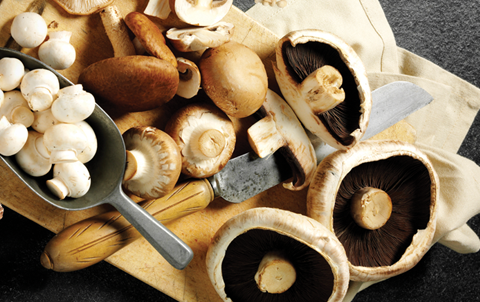
Shiitakes are a little different in that they have a ton of that umami flavor. Sautéed on top of a burger it can’t be beat…but you need to get rid of the stem. While you can eat the stem, it’s just not palatable…they’re pretty tough, almost rubber-like.
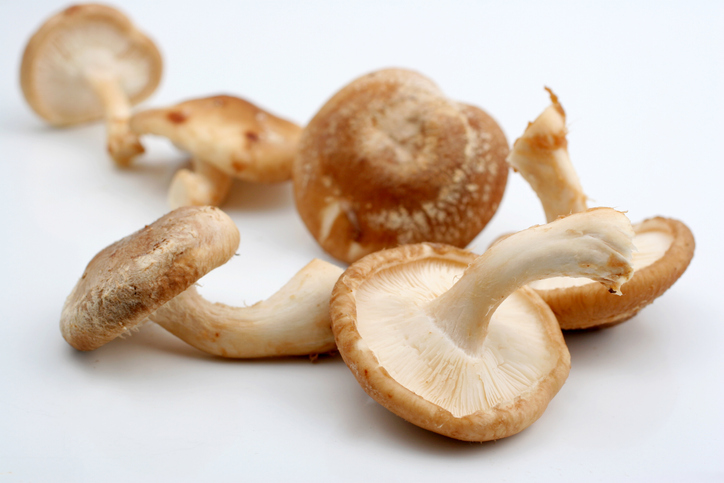
Oyster mushrooms are named for their oyster shell shape. They have a natural light gray, white, or tan color, but also can be blue, pink, brown, or yellow–although those colors are more uncommon. Some describe the taste as a shellfish-like, fitting for their name, and some describe their taste as anise-like. Oyster mushrooms are meaty and cook well. These mushrooms don’t have a cap with a veil, they are flat with gills on their underside. Since they are flat and soft, aside from slicing them, they can be torn into pieces and cooked.
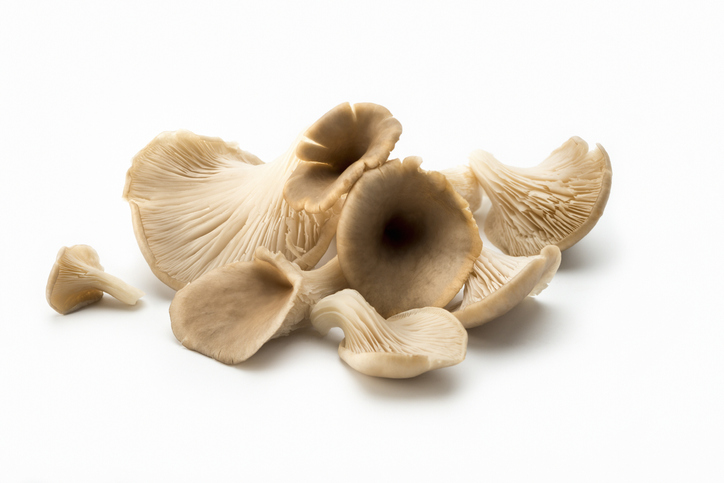
Other Uncommon, But Common, Cultivated Mushrooms
Let’s go over of the few uncommon, but common “specialty” cultivated mushrooms. We say cultivated because while the varieties can be grown wild, these are not.
The wild versions of these will look–and cost–vastly different. Cultivated mushrooms are grown in dark grow facilities, and in trays, bottles, or logs of sterilized grow medium. These fall into that gray area where they are a special order, but grown in bulk, so some don’t consider them a true specialty item. Consider these an economical way to add variety to your menus.
Up first we have the Hen of the Wood mushroom, it gets its name from the resemblance the the breast feathers of a hen. They are also called Maitake mushrooms. They have a spicy, slightly tangy or bitter taste. They are brittle and are often crumbled before cooking. You can see here the stem still has the indentation from how it is grown.
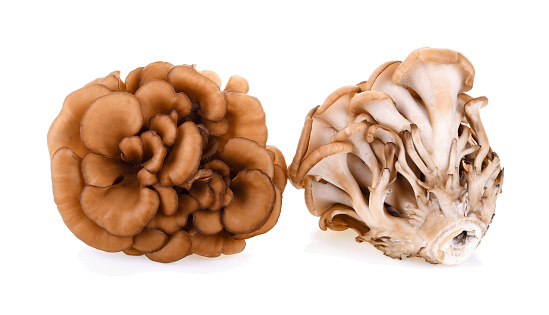
Next we have Brown and White Hon Shimeji, they add a lot of texture to your dish. These mushrooms go by a variety of names: Brown/White Clamshell, Brown/White Hon Shimeji, Brown/White Beech mushrooms, and also Bunashimeji.
The mushrooms tend to have a slight shellfish, fruity, or nutty taste. They have a robust texture and can stand up well to cooking, retaining their classic mushroom appearance. These are grown in clusters and the thick stem is trimmed off. They are a beautiful mushroom, and are generally blemish free.
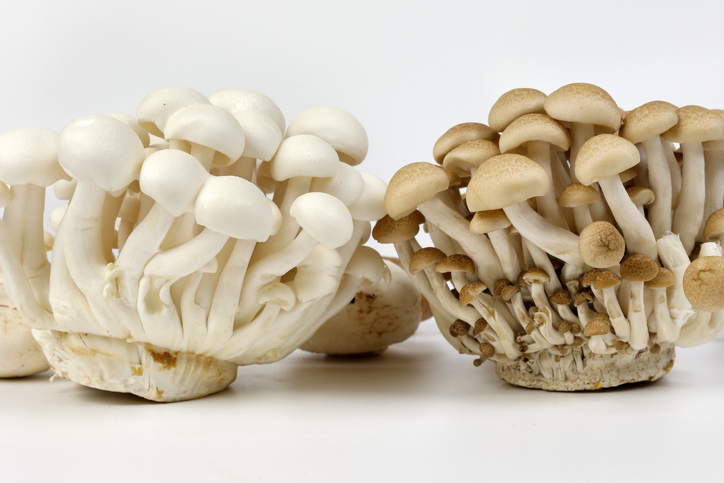
Finally, we have the Trumpet Royale, it’s a great meat substitute. They also go by a few names: Trumpet Royale, King Trumpets, King Oysters, or French Horn. They can be somewhat tough, but long, slow cooking is what makes these mushrooms shine. It is also recommended to cut them crossways to break up their fibers.
As with Jackfruit, when you prepare them right, they can have a stringy texture that can be used as a great meat substitute. Think barbecue flavors–and then shred the stems with a fork for a plant-based pulled mushroom sandwich.
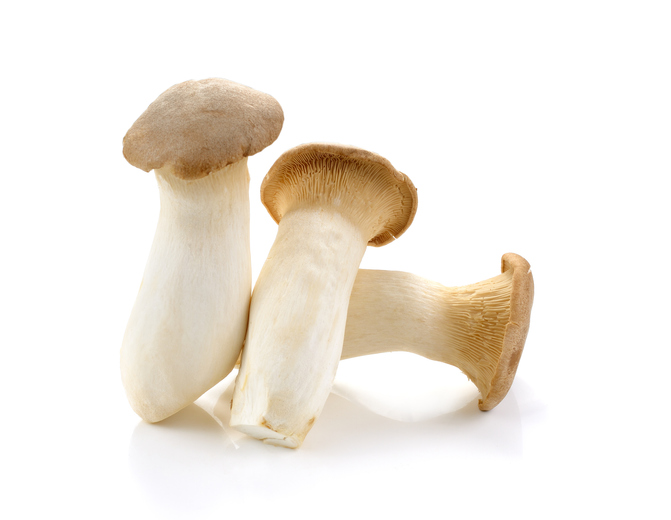
We have just scratched the surface when it comes to the glorious kingdom of fungi.
Watch as Dan goes over the basics in Produce 101: Mushrooms.
Contact your Marketing Associate about adding mushrooms to your next order. If you are not a customer, find out how to become one today!
Content provided by Chef Daniel Snowden, the Director of Culinary Development for FreshPoint Central Florida. He has been in the produce industry almost 20 years and loves getting geeky about food. Additional contributions by Lisa Brizard.
Some tools you can use:
Visit freshpoint.com for our seasonal availability guides—and while you are there, check out the FreshPress, our latest market report. Place your orders online with ease at myfreshpoint.com. Did you know you can receive real-time reliable delivery alerts on the day of your delivery? Activate and subscribe at FreshPoint.com/mydelivery
Download our app and take your produce management on the go. Place orders, review flyers, watch videos…all in one spot!
Find out more details about our UBU program, and how we are shining a spotlight on food waste while making value and food safety a priority.
We buy local to strengthen regional economies, support family farms, preserve the local landscape, and to provide fresh-from-the-farm food to our customers. Local.freshpoint.com connects you to your local farmers like never before! Customize your search by zip, city, state, radius…even by crops and growing methods. Pop in your zip code and learn about our local farmers.
Socialize with us!
Did you know we are on YouTube? Head over to our page and check out our 75+ videos. Don’t forget to subscribe, and also be a part of our Bell Team—hit the little bell icon to get notifications when we upload new videos.
Follow FreshPoint, Inc. on Facebook, Twitter, Instagram, and LinkedIn…and follow The Produce Hunter on Instagram as she finds the best specialty produce at the Santa Monica Farmers Market.

